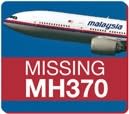US taking back seat in MH370 inquiry, says New York Times
The best information about the missing flight MH370 is probably in the hands of American officials who are in Malaysia assisting the investigation but they are keeping mum, the New York Times reported.

In a twist, some of the world's foremost experts on crash investigations, radar and the inner workings of the Boeing 777-200ER are in but they are here – technically – only to assist Putrajaya.
The paper, however, said they were “being scrupulously low-key”.
If a similar event happened in the United States, they would be gathering information from different parties and knitting it together into a progress report.
But in the case of the missing Malaysia Airlines jet, the Americans had not assumed such a role. It said information was dribbling out, sometimes in contradictory fashion, from the government, the airline and the military.
Under international agreement, the country in charge of investigating a plane crash or other such event is the one where it occurred.
If a plane comes down in international waters, jurisdiction goes to the country whose carrier was involved. In this mystery, the presumption is that the problem is Malaysia's.
But whoever is officially responsible, there is a guiding American principle.
"We try very hard not to make it look like we are running the investigation, even if we more or less are," the report quoted Bernard Loeb, a former head of aviation safety at the National Transportation Safety Board (NTSB), which leads the American delegation of experts at any crash involving an American airline or an airplane built in the United States.
"When crashes occur here, foreign aircraft or engine manufacturers like Airbus or Rolls-Royce get the same ‘observer’ status and often contribute technical expertise."
The report said, in practice, although it varied by country, the inquiry was often an American show.
"Most of the local guys are pretty darned good," the report also quoted Thomas Haueter, another former chief of air safety.
"The problem they have is, they don't do it a lot. We do this a lot," he added.
Haueter said depending on the circumstances of the crash, the United States would show up with investigators from the safety board, the Federal Aviation Administration (FAA), Boeing and General Electric.
Sometimes, he said, there was "this huge army of Americans showing up," and when they met with local aviation safety authorities, "there are only two of them".
"We're aware of that," he said. "We always have to tone it down." The report said the main goal for American investigators was to determine whether there was a flaw in the hardware, maintenance practices or operations of an American-built jetliner that could cause another one to crash.
But they often confront conflicting agendas.
If the crash involved a government-owned airline or government-provided air traffic services, or if there was possible misconduct by a pilot from the host country, some parties may try to shift blame.
In the Malaysian case, the report said the safety board has sent its senior radar expert, who is a former air traffic controller and a veteran of many inquiries, including investigations of near-misses and of an air traffic controller who fell asleep in the tower at Ronald Reagan National Airport in Washington.
Outside experts say the investigator, Scott Dunham, may be the single best person to make sense out of the limited civilian radar data and the route captured by military radar that may or may not show the missing aircraft.
After its usual announcement that it was sending a team to assist the local authorities, the safety board was bombarded with questions. So it took the unusual step of issuing a second news release, emphasising that the Malaysian authorities were leading the investigation, that American investigators were "providing technical assistance" and that it had no plans to comment further.
The report added that the FAA was also in Malaysia as part of a delegation led by the safety board.
"The FAA is going to be dead silent, because the NTSB is so careful about controlling information," said the report quoting Steven B. Wallace, a former head of the aviation administration's office of accident investigation.
In some previous cases, the safety board appears to have played a behind-the-scenes role in assembling and disseminating information, always over the signature of a local official. – March 14, 2014.



